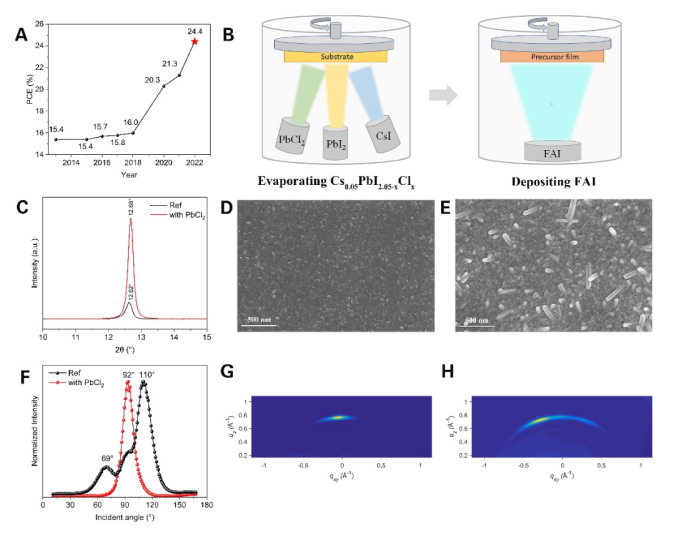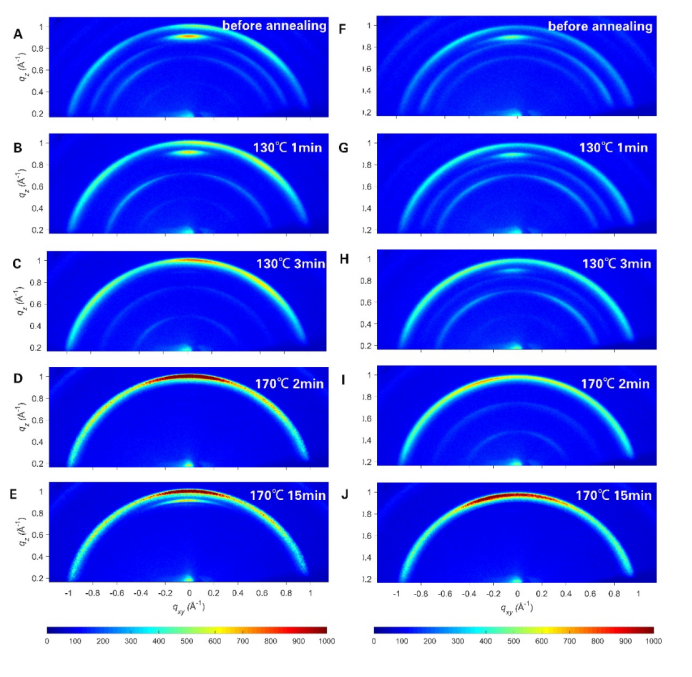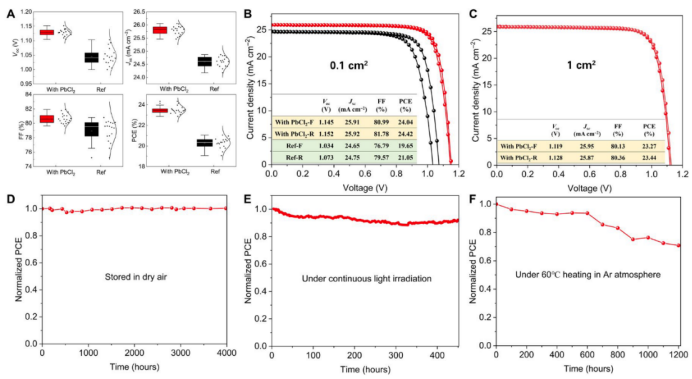Recently, the research team of Yi Chenyi, Department of Electrical Engineering and Applied Electronics (EEA), Tsinghua University reported a new method for preparing high-efficiency large-area perovskite solar cells (PSCs) based on vacuum evaporation. The cells prepared by this method broke the record of efficiency of vacuum-evaporated PSCs, and the achievement was published in the international academic journal “Science Advances”.
Metal halide hybrid perovskite solar cells (PSCs) have the advantages of high power conversion efficiency (PCE) and low cost and have received great attention from the academia and industry. However, most of the reported high-efficiency PSCs were prepared by spin coating, which is only suitable for laboratory-scale devices. Moreover, solvents used in the solution process may be detrimental to the underlying functional layers and are harmful to the environment. In contrast, these drawbacks can be avoided by using vacuum evaporation. The precursors can be evenly and uniformly deposited on substrates, and the film thickness can be precisely controlled during the vacuum evaporation process, which is compatible with scalable fabrication.

Vacuum-evaporated PSC progress, process and precursor film characterizations.

Crystallization of perovskite film characterized under in-situ GIWAXS test
Yi Chenyi’s team reported a Cl-alloy–mediated sequential vacuum deposition method for fabricating high-efficiency PSCs. XRD, SEM and GIWAXS tests show that the introduction of Cl into the precursor film can form a multi-component alloy (Cs0.05PbI2.05-xClx), which makes the precursor film have a preferred orientation perpendicular to the substrate growth and stronger crystallinity. In situ GIWAXS and in situ GIXRD tests showed that the incorporated Cl can accelerate the solid-state diffusion of organic ammonium halide salt, facilitate the perovskite phase transition from the δ phase (δ-FAPbI3) to the α phase (α-FAPbI3), and increase the crystallinity of FAPbI3. In addition, the PSCs fabricated by the chlorinated alloy-mediated vacuum evaporation method have lower defect density and lower non-radiative recombination losses.
The Cl-alloy mediated vacuum deposition method can produce perovskite films with high crystallinity and homogeneity. The corresponding 1-cm2 PSCs exhibited a champion PCE of 23.44% (certified PCE of 22.6%). The evaporated PSCs show good stability with negligible decline in device performance after storage in dry air for more than 4000 hours. Moreover, the unencapsulated devices maintained 97% of their initial PCE after 1300 hours of storage in ambient air at a humidity of 35% and maintained 92% of the initial PCE after 450 hours of maximum power point (MPP) tracking under continuous light irradiation

Device performance of PSCs.
The above achievement was published in the academic journal Science Advances under the title “Sequential vacuum-evaporated perovskite solar cells with more than 24% efficiency”. The first author of the paper is Li Hang, a 2020 doctoral student of EEA, the corresponding author is Associate Professor Yi Chenyi of EEA, and the collaborators include Dr. Wolfgang Tress, Zurich University of Applied Sciences, Switzerland. This work was supported by the National Natural Science Foundation of China, the Independent Scientific Research Project of the State Key Laboratory of Electric Power Systems, and the National Bioenergy Research Project Fund of State Grid.
Original link: https://www.science.org/doi/10.1126/sciadv.a

















 News & Events
News & Events